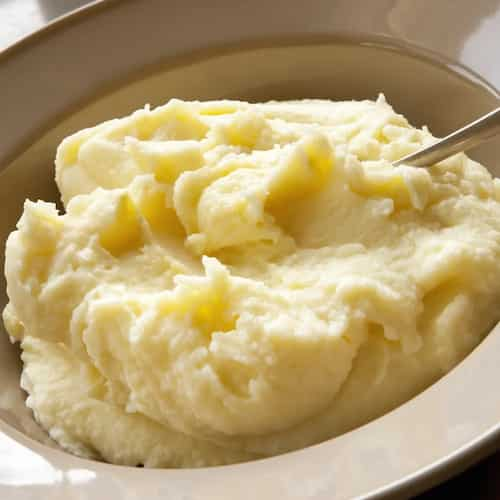It has been a long time since mashed potatoes were first created, unfortunately, more recently in instant form. It takes more work than it appears to make the Thanksgiving staple. It is thought people might choose the turkey (mainly vegetarians) or the cranberries (which aren't trendy anymore) if they were made to choose one dish off their Thanksgiving meal to get rid of, but we guarantee that no one would choose the mashed potatoes.
They serve as the meal's foundation, its most vital component, and the only item that must be provided in any kind. Mashed potatoes are a must-have for a traditional Thanksgiving meal. Boil your potatoes, peel them, and place them in a saucepan. Then, mash them well. To two pounds of potatoes, add a pint of milk, a little salt, and mix well to combine. Be careful not to let them stick to the bottom. Finally, add a quarter pound of butter and whisk it all together before serving.
Why Mashed Potatoes Are Important
How did mashed potatoes become yet another Thanksgiving staple if they weren't yet available in Plymouth in the 17th century? The origins of the festival itself provide the explanation. When America was young, it was typical for the president in office to proclaim a "national day of thankfulness," but these declarations were erratic and irregular. The first state to formally recognise Thanksgiving was New York in 1817. Other states soon followed, but it wasn't until Abraham Lincoln proclamated it a national holiday in 1863 that it became a recognised national holiday.

If we go back 10,000 years to uncover the essential component of mashed potatoes, we might find ourselves in Chile's cold Andes Mountains. Take a go at what it might be. The potato was forced into the South American diet as a staple due to its resilience and ability to resist such difficult conditions. This helped to maintain community stability in mountainous regions of South America while famine-stricken European countries, like Ireland, fell apart. The potato wasn't always edible, though. It began as a tiny, toxic vegetable that was bitter and dangerous to eat. Due to the selective breeding techniques used by the Incas, it had evolved into a more pleasant, entirely edible vegetable by the time the Spanish arrived and defeated the Andeans in the middle of the fourteenth century.
The potato's path to popularity was rapid from that point on. Though initially hated (and even made illegal in France from 1748–1722) because it was regarded as food for livestock and unfit for human consumption, the Spanish had recognised its nutritional value and brought it to Europe. However, its satiating, energising qualities were undeniable and it quickly became a smash hit. French, English, and, yes, Irish people all wanted a piece of the potato wealth. People can't get enough of potatoes, which are currently the third most eaten food source in the world. However, who did it first? Although it was believed that the Andean people mashed their potatoes and consumed them, the first historical instance of mashed potatoes can be found in the 18th century in the textbook "The Art of Cookery" by English author Hanna Glasse. The recipe's straightforward language, which had previously been extremely complex and exclusive to the aristocracy, made it accessible to the common citizen and contributed to its current extent of distribution. Today, the adaptable mashed potato comes in what seems like a limitless number of variations.
As seen by the Irish version of mashed potatoes, the traditional Irish colcannon, its straightforward foundation characteristics enable it to blend well with a range of components. Every holiday season, the mashed potato manages to slip onto millions of dinner tables and into our hearts because to its versatility and kind nature. Mashed potatoes are great because they can be so personalised. As long as they contain soft, creamy potatoes, you can pretty much do whatever you want to them. Try experimenting with your mashed potatoes this holiday season. Make the recipe your own by including some new ingredients!
Tips To Make Mashed Potatoes
Your potatoes should be boiled whole. You give water more of a chance to penetrate the potatoes by cutting them small. In the end product, more water implies more liquid and less flavour.
Keep the potatoes warm, You must begin mashing the potatoes as soon as possible after they have been cooked and drained if you want them to have a truly creamy flavour and texture. You cannot wait until the potatoes have cooled before doing so.
Before adding any liquid, you must first add fat (in this case, it should be butter) to the potatoes. This guarantees that the potato's texture will be crisp before being softened by all that milk.
All of that liquid won't be absorbed at once by your potatoes. In order to prevent liquid-y mashed potatoes, working in smaller pours lets them soak up all that creaminess.


